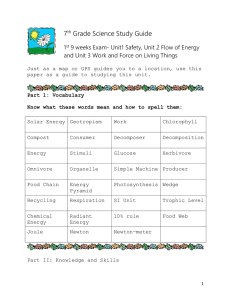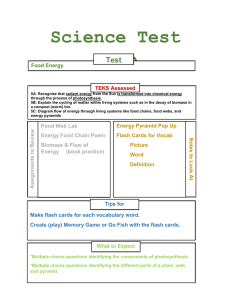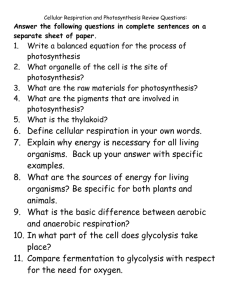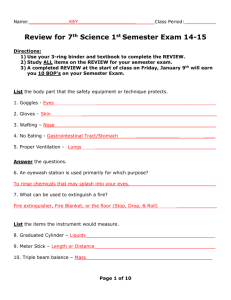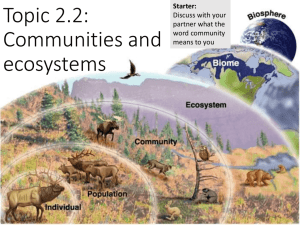Unit 2 Study Guide
advertisement
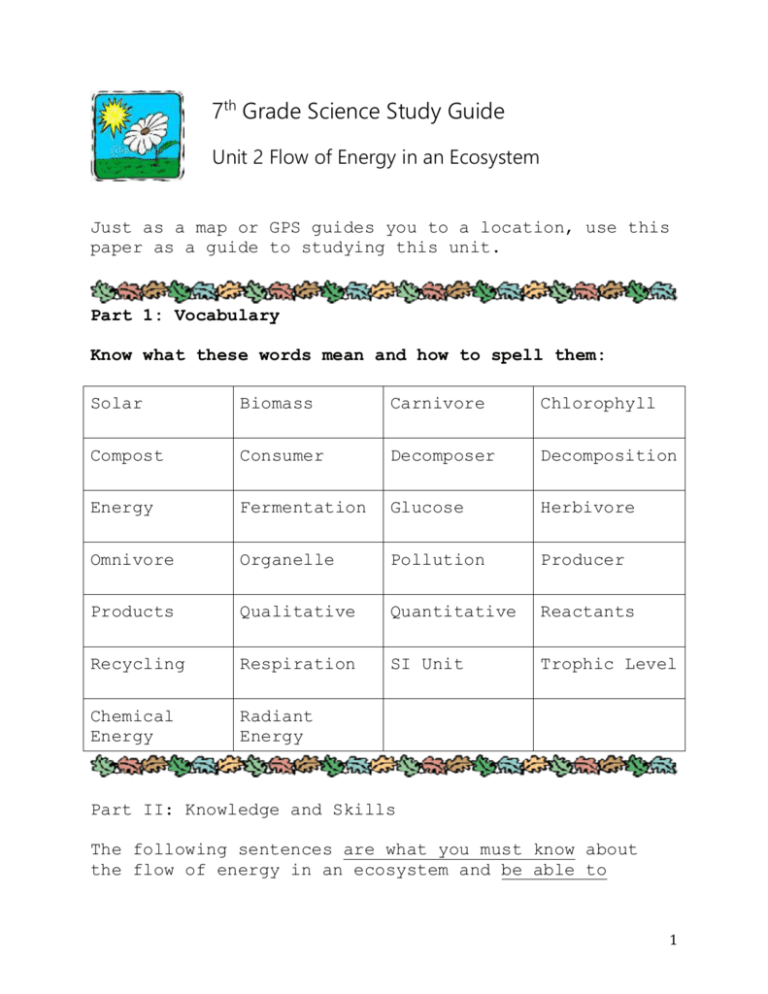
7th Grade Science Study Guide Unit 2 Flow of Energy in an Ecosystem Just as a map or GPS guides you to a location, use this paper as a guide to studying this unit. Part 1: Vocabulary Know what these words mean and how to spell them: Solar Biomass Carnivore Chlorophyll Compost Consumer Decomposer Decomposition Energy Fermentation Glucose Herbivore Omnivore Organelle Pollution Producer Products Qualitative Quantitative Reactants Recycling Respiration SI Unit Trophic Level Chemical Energy Radiant Energy Part II: Knowledge and Skills The following sentences are what you must know about the flow of energy in an ecosystem and be able to 1 demonstrate your knowledge on the unit test this year and on the STAARs exam next year: Practice predicting/identifying safety equipment you would use for a lab. 1. Practice identifying the steps of a lab procedure. I.e. wait for teacher instructions, then read lab instructions, etc. 2. Where does life on Earth get its energy? 3. Explain what life on Earth would be like without photosynthesis. 4. Practice identifying lab equipment needed for a lab or lab extension. 5. Identify the type and source of energy that starts the photosynthesis process. 6. Explain what happens to the solar radiation in plants. 7. Name the ingredients needed for photosynthesis to take place. 8. Identify which type of organism undergoes photosynthesis. 9. Practice identifying the process of photosynthesis from images. 10. Be able to write the chemical equation for photosynthesis. 11. Be able to write the chemical equation for cellular respiration. 2 12. Compare and contrast photosynthesis and cellular respiration. 13. Explain how matter cycles through living systems. 14. Be able to draw and label a food chain, food web, and energy pyramid. 15. What do producer’s give us? 16. What do the arrows in a food chain and food web point to? 17. Identify the trophic level that has the most energy and explain why. 18. Practice identifying producers, consumers, and decomposers in food webs from different biomes. 19. Practice converting food webs into energy pyramids correctly and label both. Be able to draw both. 20. Know how much energy is used at each level of energy pyramid. 21. Explain the 10% Rule. 22. Practice predicting what will happen in energy pyramid when one level of energy pyramid changes. (Use Gizmo) 23. Describe how secondary and tertiary consumers depend upon the sun for its energy. 24. Explain what happens to the energy in matter that’s been placed in a compost bin. 25. Be able to draw and label the flow of energy in a compost bin. 26. Explain what is happening in a compost bin/pile. 3 27. Explain why decomposers are important to the ecosystem. 4
